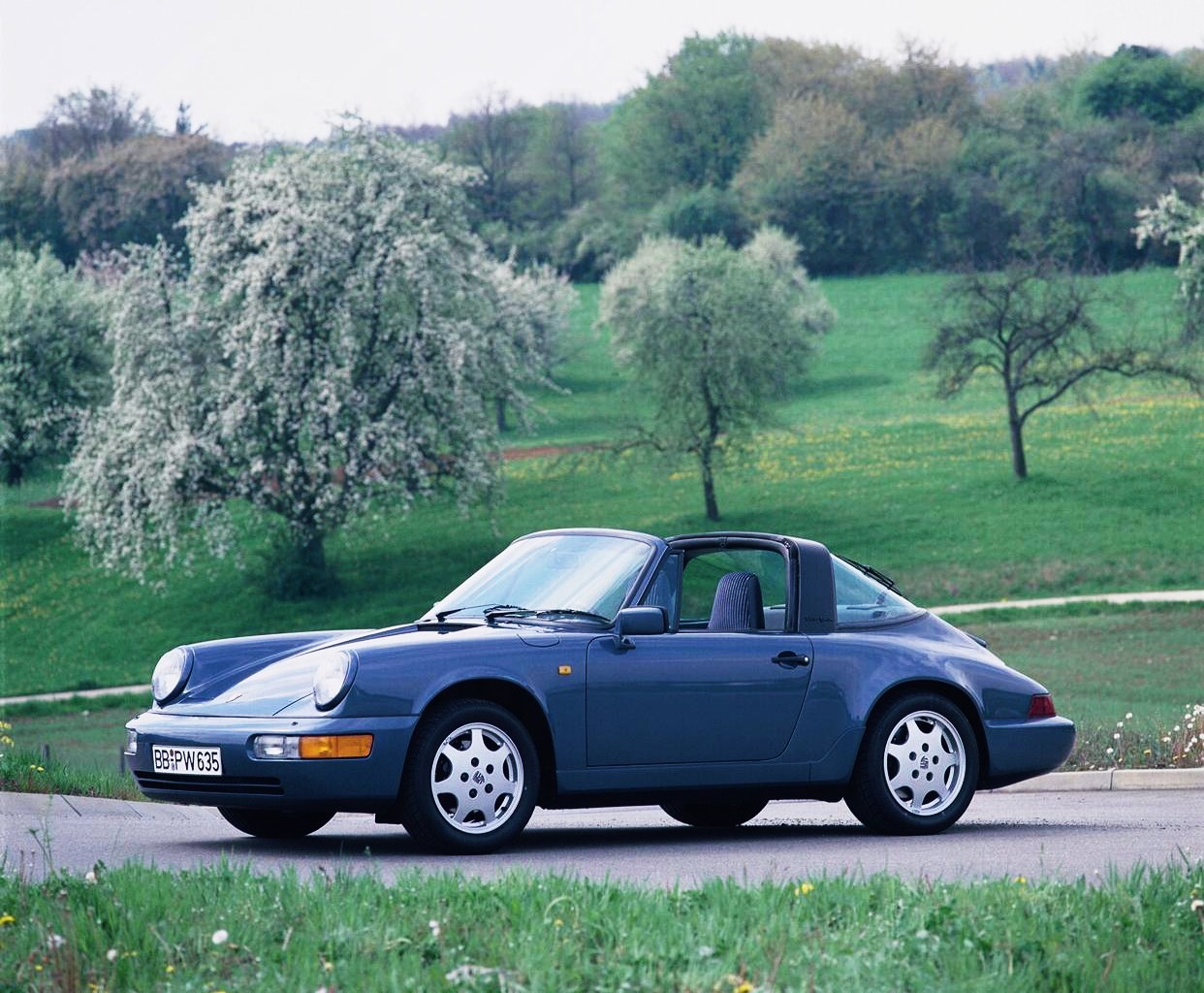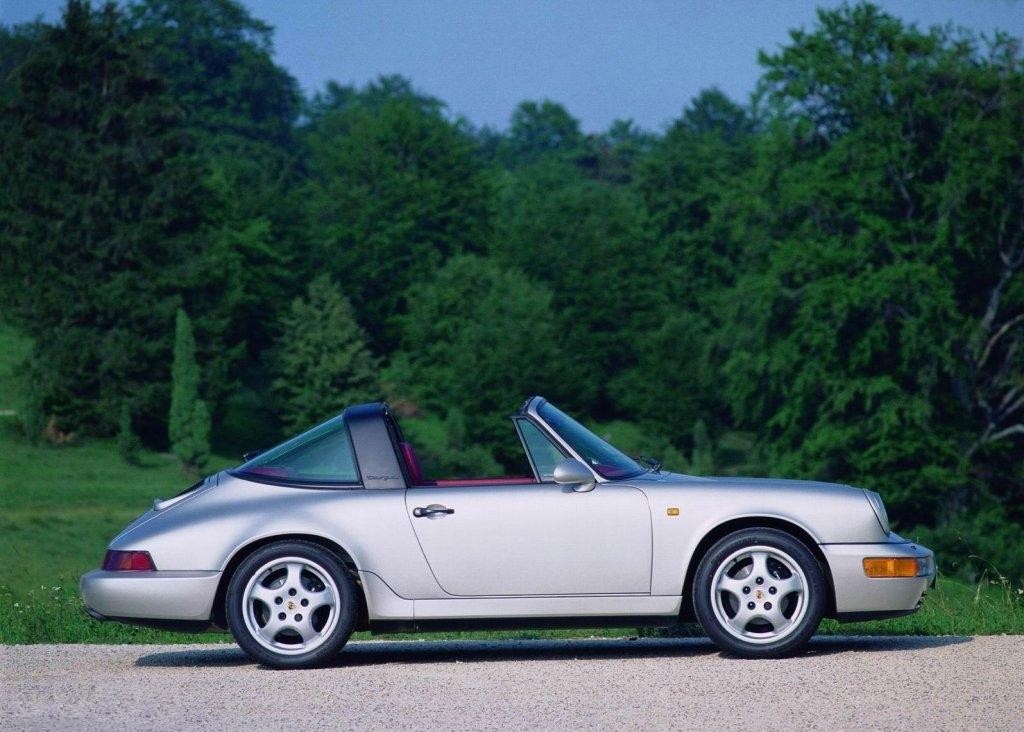
- Eager flat six engines
- Accurate, well-weighted steering
- Powerful brakes
- Lift-off oversteer
- Firm ride
- Indecisive automatic transmission
Overview
Released in October 1989, the Porsche 964 911 Targa was a two-door sports car with a removable targa roof. The 911 Targa was powered by a 3.6-litre horizontally-opposed (or flat) six-cylinder M64 petrol engine with oil/air cooling, dry-sump lubrication and a single overhead camshaft (per cylinder bank).
The 911 Targa range consisted of rear-wheel drive Carrera 2 and four-wheel drive Carrera 4 variants, the latter solely available with a five-speed manual transmission – the Carrera 2, however, was available with a four-speed automatic transmission. From 1990, the Carrera 2 was available with a Tiptronic automatic transmission with adaptive electronic management.
Dimensions and suspension
The 964 911 Targa was 4250 mm long, 1652 mm wide, 1320 mm tall and had a 2272 mm long wheelbase. Furthermore, the 911 Targa had MacPherson strut front suspension with coil springs and an anti-roll bar; at the rear, there were semi-trailing arms (the previous 930 911 had a rear torsion bar), coil springs and an anti-roll bar.
| Variant | Drive | Years | Engine | Trans. | Peak power | Peak torque |
|---|---|---|---|---|---|---|
| Carrera 2 | RWD | 1989-94 | 3.6-litre petrol F6 | 5sp man., 4sp auto |
184 kW at 6100 rpm | 310 Nm at 4800 rpm |
| Carrera 4 | 4WD | 1989-94 | 3.6-litre petrol F6 | 5sp man. | 184 kW at 6100 rpm | 310 Nm at 4800 rpm |
4WD system
For Carrera 4 variants, the Porsche Dynamic Four-Wheel Drive (Porsche Dynamische Allrad Steuerung or PDAS) system consisted of an epicyclic (or planetary) centre gear differential and two electronically-controlled wet clutches which limited slip in both the centre and rear differentials. In normal conditions, the system provided a 31:69 front:rear torque split.
The longitudinal (inter-axle) clutch provided variable locking between the front and rear axle. When accelerating out of a corner, this longitudinal lock would direct more torque to the slower turning axle and the front:rear torque split was infinitely variable. The lateral (transverse) clutch, however, provided variable locking of the rear wheels to reduce lift-off oversteer when cornering (the ferraria effect).
Safety equipment
Standard safety equipment for the 964 911 Targa was initially limited to ABS. From 1993, however, the 911 Targa was fitted with a driver’s airbag as standard.
Features
Standard features for the 911 Targa included 16-inch alloy wheels, a four speaker sound system with a radio and cassette player, climate control air conditioning, power adjustable front seats, leather trim, cruise control, front fog lights, central locking, power mirrors, power windows and an alarm.
The 964 911 Targa was also fitted with a rear spoiler which automatically deployed once the vehicle exceeded 80 km/h.
Related links




